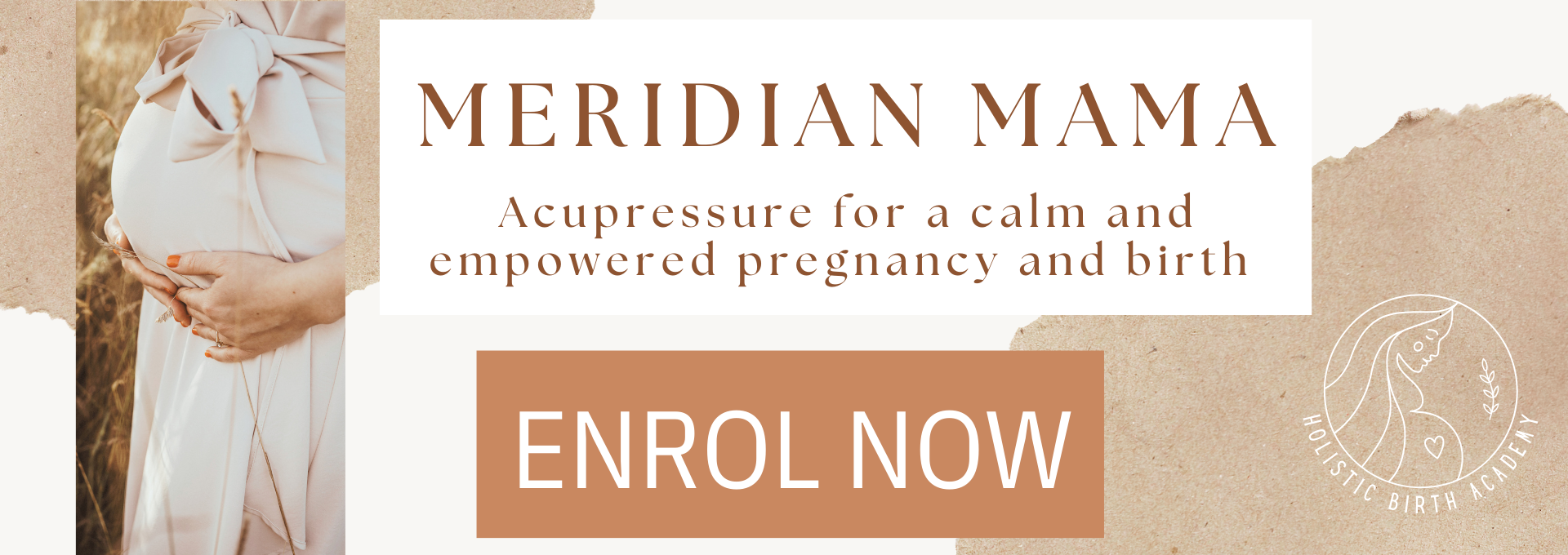Jess and Katie from the Holistic Birth Acadamey are both professional acupuncturists, working with women to support their pregnancy, birth, postpartum and parenting journey's. Together they have created an online program, called Meridian Mama. I have completed the course (even though I am well past all of the stages it is aimed at) and found it was a wealth of self help knowledge, some of which I had actually used with my own pregnancies 16, 20 and 30 years ago! Had this course been available then, I'm sure I would have used many more points for my pregnancies and my 6hr, 2.5hr and 45 minute births. I particularly liked, "SP6/Spleen 6 point is an amazing point to know for childbirth. It dilated your cervix and therefore can shorten your labour." I used this one most successfully in my last birth. I did a session of points hoping to start things off 10 days after the EDD passed, and then, oddly, attempting to make custard fruit tarts for some strange reason. I didn't get too far before I was feeling the waves tightening and had to put it all in the fridge until after this little one arrived. We went straight to the hospital because my last birth was fast at 2 and a half hours and I knew this was on a fast track too. He was here in 45 min, my midwife only got one glove on and I only got one leg on the bed before he eagerly arrived! I have also shared these acupressure points with many of my Doula and Placenta clients over the years and many of them also found that they really are a very simple effective DIY tool, and one your partner can use to help you too. There are so many acupressure points to know that are demonstrated on video, and a pdf you can print out with each module. Doulas! Midwives! This is a fantastic tool to have in your kit!!
0 Comments
Fatima Wheeler, Birthing Goddess
A great discussion with Fatima Wheeler about her experience with Placenta Encapsulation and much much more. Fatima has consumed both of her placentas, both in different ways. Do we agree on the best way to do it? Have a listen and find out. Also a visual on placenta storage, what to take with you to your birth. Take a look at the Birthing Goddess podcast menu, you will find so many amazing interviews, I highly recommend her chat with Jess Ngahau, her incredible story, and one with a baby whisperer!  RSS Feed RSS Feed
|
Author
|
Word on the Street!
"This was the best thing I ever did! I went from getting the start of PND, then started taking my tablets and it levelled everything out and I could enjoy the time with my son.. I will be getting them again with my next child" L
The information on these pages has not been evaluated by the TGA. The services offered are not clinical, pharmaceutical, or intended to diagnose or treat any condition. Families who choose to utilise the services on these pages take full responsibility for researching and using the remedies at their own risk.
Copyright ©2009-2024 Samantha Birch. All rights reserved.



